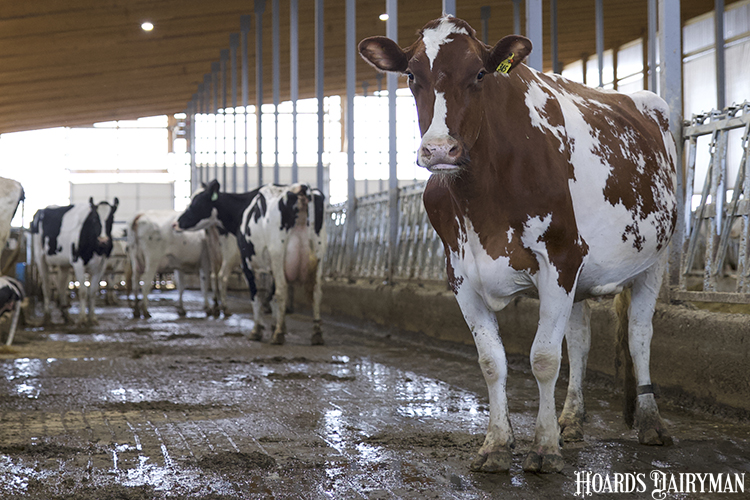
Dairy herds around the world have an average lameness prevalence rate of 25%. That was a statistic that Karl Burgi, a hoof care consultant and founder of the Save Cows Network, shared during the July Hoard’s Dairyman webinar, titled “Three keys to exceptional hoof health.”
Many factors contribute to hoof health in dairy cows, and one of them is housing. Burgi shared several lameness risk factors related to the environment, including animal handling, inappropriate use of crowd gates, and perching in stalls.
Another critical aspect of housing that has a tremendous impact on hooves is the floor. Both smooth, slippery surfaces and rough surfaces can cause damage.
Burgi explained that a cow’s claws require a flat walking surface with adequate traction. This can be achieved with grooves in the concrete. He recommended grooves that were 3/4 inch wide and 1/2 inch deep, spaced 3 1/2 inches from center to center.
Poor floor construction can cause trauma to hooves, and surfaces with no traction are a risk for slipping. Burgi also pointed out that floors can wear out over time and become a hazard.
“Dairy barn floors are in a harsh environment,” Burgi said. He compared the pressure a cow exerts against a floor to that of an automobile on the road. On a 3,000-cow dairy, that would be similar to 3,000 cars driving on the same road several times per day.
Heavy equipment and the daily scraping of abrasive bedding across the surface contribute to wear and tear. Floors are also exposed to corrosive chemicals and deicing salts. In addition, concrete is subject to freezing and thawing cycles, which can be damaging over time.
Durable floors that can withstand the realities of a dairy barn environment start with concrete production and then curing. “Proper curing is essential,” Burgi emphasized.
During the curing process, two factors must be controlled: evaporation rate and temperature. He said that concrete must be kept moist to combine chemically with the water. The floor should be cured for at least seven days, ideally when the temperature is between 50°F and 70°F.
For floors that become worn out or that lacked proper design from the start, there are a few options. One is to add a narrow groove between existing deep grooves to improve traction. Smaller grooves can also be added to slatted floors, which are harder on cows’ feet, to improve the surface.
Rubber covered floors are another alternative to fix worn out or slatted floors, but Burgi cautioned that rubber flooring only helps if cows have access to comfortable stalls that encourage lying time.
“When standing is more comfortable than lying, lameness will be the result,” he shared.
If building new or remodeling dairy facilities, Burgi reminded farmers to keep the cows in mind. “The cow cares about the floor it is walking on more than the construction person making the floor,” he stated. “Constructing claw-friendly floors for dairy cows plays an enormous role in lameness prevention.”
To learn more, watch the July Hoard’s Dairyman webinar, “Three keys to exceptional hoof health.” This webinar was sponsored by Hoof-Zink.








